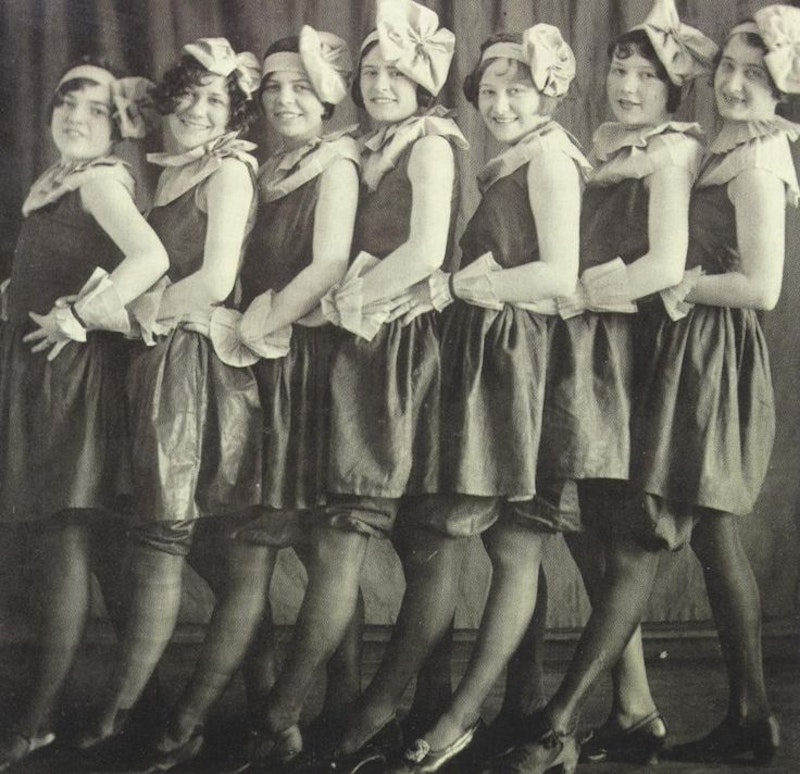A number of years ago I became interested in American vaudeville and early American entertainment. I was looking for an artistic form for an opera that was distinctly American as opposed to some version of a classical European import. My maternal grandmother, a Lithuanian immigrant, told me about seeing vaudeville shows as a little girl. She said her favorite act was a guy named Joe Penner who’s recurrent punchline was “Anybody wanna buy a duck?” She said it was always guaranteed to bring down the house. The strangeness caught my attention and I began to read about vaudeville at the downtown library in Baltimore.
Vaudeville originated in France and translates as “the voice of the city.” In France it meant short popular plays with no intellectual depth, on topical subjects. Between these plays there would be dance numbers. American vaudeville was closer to English Music Hall, which consisted of various acts with no connection between them, meant to entertain the public. In Alfred Hitchcock’s film The Thirty Nine Steps you can catch a glimpse of what Music Hall must’ve been like when Mr. Memory, part of an international spy ring, does his act before a rowdy crowd. The crowd was an integral part of the experience of both Music Hall and later vaudeville. They were loud and boisterous in approval or criticism. They’d spent a nickel to go in, so they were entitled to their opinions. If the crowd didn’t like your act, you were finished, but if they did it could mean The Big Time.
The American entertainment industry was born in sawdust-floored bars in the Bowery in New York City. Bar owners tried everything they could to get customers to buy cheap beer. At one time you could eat a hearty lunch in a bar and see a pretty Irish girl singing sentimental songs for the price of a glass of beer. Minstrel shows, popular in America from before the Civil War, also gave vaudeville its particularity as did P.T. Barnum’s New York Dime Museum and his touring acts like Jenny Lind ‘the Swedish Nightingale,” one of the first real superstars. entrepreneurs saw the potential and, in combination with the Music Hall concept, packaged it. In a number of years there were large vaudeville houses all across the country and people trying anything to get onto one of the stages. The experience of these early vaudeville shows can be experienced vicariously in the novel McTeague by Frank Norris. There’s an incredible scene where McTeague and a German immigrant family go “to the show.”. Reading that book removes all romanticism from the American immigrant period.
As time went by and vaudeville developed, the acts went in every possible direction. Besides song-and-dance numbers there were bicycle acts, acrobats, animal acts, comedians from every ethnic group, notorious women, midget acts, female boxing, strongmen, jugglers, ventriloquists, personal appearances by celebrities, transvestites (who at that time were called “female impersonators”), magicians, and pantomime acts called “Dumb Shows” that were often used as the first acts so that the noise made by entering and departing audiences wouldn’t interfere with the act. My paternal Great-Great-Uncle was a whistler on the Orpheum Circuit. If your act could hold the public’s attention for 15 minutes, you were in.
Everything that begins must have an end. At some point short films were used as Dumb Shows to wow an astounded public. Later artists would film their acts, making them available everywhere at once and inadvertently killing their own demand. Like so many artists, the Marx Brothers did vaudeville before becoming film stars, as had Charles Chaplin, who got his start in the Music Hall.
Another thing that killed American vaudeville was when it became increasingly organized as a business. Once an act was popular, a performer wasn’t allowed to change it. This happens a lot. In every art there’s a period of experimentation which is followed by organization. I recall Frank Zappa saying that the reason there was so much experimentation in the music of the 1960s was that the money men didn’t know what would sell so they tried everything. Then, once they found a few formulas, experimental creativity effectively came to an end. The same could be said for film and TV. Vaudeville’s last public stand was in burlesque houses, the period of decadence. I once saw, during the only bachelor party I ever attended, in Baltimore at Blaze Starr’s Two O’clock Club, an aging woman named Baby Fats, lift a chair with her breasts.
But the vaudeville concept is still alive. TV variety shows hosted by Steve Allen, Jack Paar, Johnny Carson, Ed Sullivan and David Letterman all carried forth the vaudeville concept. Performance art is heir to vaudeville; the difference that it doesn’t care if its public is entertained or not. I’d say the vaudeville concept has invaded everything, from politics to the daily news. The proof? Modern presidential elections. Just as early touring vaudeville helped shaped American collective social consciousness—people in Des Moines saw the same acts as those in New York, Cleveland or Baltimore—it now shapes public opinion through TV and the internet.

